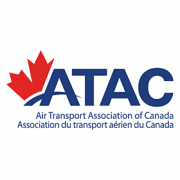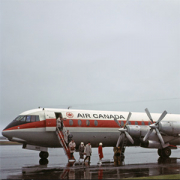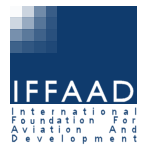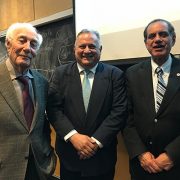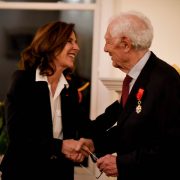Address to the Montreal International Aviation Club >>
by Pierre J Jeanniot, delivered by Jeffrey Shane, General Counsel, IATA
24 November 2016 >>
It’s always a special pleasure to meet with a group of aviation enthusiasts – people who understand what a remarkable industry this is and what it has contributed to the quality of the world we live in!
Even for enthusiasts, however, it’s easy to forget what an incredible journey it has been over first century of aviation, and so I am going to provide a brief review of the highlights.
Then we will spend a few minutes considering together what we might expect in the future, given the remarkable trajectory this industry has been on, and given the exponential rate at which aerospace technology has advanced.
First, the history. . . .
Two years ago, we celebrated 100 years of the first commercial flight, when a flying boat carrying one passenger flew 21 miles from St. Petersburg, Florida, to Tampa at the breakneck speed of 55 miles an hour. The flight lasted 32 minutes.
From this humble beginning has emerged a global airline industry that last year transported 3.8 billion passengers worldwide.
No one could have imagined, back then, the extraordinary success that would be achieved in civil aviation over the next 100 years, nor the fundamental transformation of life on this planet that it would engender.
But it was by no means a linear progression. There were some important triggering events and some significant accelerators.
It’s an uncomfortable proposition, but there can be no denying it: Wars are great accelerators of technology!
The First World War provided a surge of innovation in aviation. The occasional bomb dropped by hand at the start of the war was nothing compared to the thousands of kilos of bombs carried by the much larger twin-engined airplanes which had joined the battle by 1918.
Engines quadrupled in power. There was a vast increase in the number of trained pilots. By the end of the war, more than 150,000 aircraft had been produced by the major combatants.
But none of the aircraft available at the end of the First World War were designed to carry either freight or passengers.
While potential passengers remained a bit skeptical about the safety of air travel, the great advantage of speed for freight and postal services was recognized almost immediately.
In 1919, Pierre-Georges Latécoère – an aircraft manufacturer in Toulouse – obtained a subsidy from the French government and some surplus military aircraft and started to operate regular mail services between Toulouse and Casablanca and eventually to Dakar.
Its successor, Aéropostale, began regular flights between Buenos Aires to Natal in northern Brazil, and across the Andes to Santiago.
In Canada, the first bush flying took place in 1919 to survey the Quebec wilderness.
Air mail services expanded rapidly in North America, and by 1925 the major U.S. banks had become regular customers.
These early commercial air services laid the foundation for the establishment of Imperial Airways in Britain. The first leg of its service from the UK to Australia was inaugurated in 1927.
Pan American Airways started its first international passenger service between Key West and Havana in 1928.
By 1931, KLM was operating a regular service between Amsterdam and Djakarta.
Air France was born in 1933, a regrouping of four small French airlines.
The pace of development quickened.
The 1930’s brought more powerful engines, metal fuselages instead of wood, retractable landing gear, and variable pitch propellers.
It was also in the 1930’s that the Boeing 247 led the way in revolutionizing air travel. Its two 550-horsepower Pratt & Whitney “wasp radial” engines propelled the airplane 50 mph faster than any other airliner at the time, and it was more economical to operate.
The Douglas DC-3, the airplane you see in the picture, was one of the most popular and versatile aircraft ever produced. General Eisenhower rated it as one of the most significant items of war-winning equipment. Over 17,000 were produced.
The Second World War represented another major aerospace accelerator. It accelerated development of more efficient piston engines such as the Rolls Royce Merlin, and major progress in aerodynamics. It also saw the introduction of large 4-engined bombers, the Flying Fortress and the Lancaster, each capable of carrying up to 10 tons of bombs.
But bigger was not always better! The most powerful engine built up to then was developed by Pratt & Whitney for Boeing’s 4-engined StratoCruiser. Each engine generated 4,300 horsepower and had 28 cylinders. Because they were so complicated, however, reliability became a major problem.
The most important development engendered by World War II, of course, was the introduction of jet engines and their use on fighter aircraft. The first of these, the German Messerschmitt Me262 and Britain’s Gloster Meteor, entered service in 1944.
This era also witnessed important developments in rocketry, notably Germany’s V1 and V2 guided missiles.
Commercial air traffic exploded during the 1950’s, growing from 3 million to 57.7 million passengers by the end of the decade.
The U.S. carriers Pan Am, TWA and Eastern became major players, and dominated the market.
European airlines also experienced a revival.
The 1950’s witnessed the introduction of the Douglas DC-4, DC-6 and DC-7, as well as the Lockheed Constellation, Vickers Viscount and Vanguard Turboprops. A transatlantic crossing took between 12 and 14 hours, using 4-engined aircraft carrying over 80 passengers.
Transpacific journeys required multiple stops – Hawaii, Midway and Guam.
The first commercial jet airliner was the DeHavilland Comet. With four so-called “Ghost” turbojet engines built into the wings, it first flew in 1949. Each engine developed 5000 pounds of thrust and consumed 1.2 pounds of fuel per pound of thrust per hour. Production was eventually halted due to catastrophic metal fatigue attributable to the airplane’s faulty design, but the airplane had been a game changer.
By 1955, the Pratt & Whitney JT3 engine was developing 13,500 pounds of thrust, but used 24% less fuel than the Comet’s engines.
The Douglas DC-8 and the Boeing 707 had twice the capacity and flew at twice the speed of earlier 4-engined propeller aircraft. In other words, they were four times as productive.
1970 saw the introduction of the Boeing 747, the first wide-body, with a twin aisle fuselage with three times the capacity of the Boeing 707.
At this point it was possible to say that air travel was no longer reserved primarily for the elite. The era of mass air travel had arrived.
An airplane designed exclusively for the elite, however, was the supersonic Concorde, produced cooperatively by France and the UK. Entering service in 1976, it was designed to fly 100 passengers at twice the speed of sound. It was a great technical achievement, but ultimately an economic failure. There just weren’t enough elite passengers. It ceased operating in 2003.
The development of turbofan engines in the late 1980’s substantially increased the efficiency of the turbojet. This innovation consisted of the addition of a larger fan, which passed part of the air around the engine, making it run cooler and quieter.
Steady increases in the size and range of wide-body commercial airplanes being produced by Airbus and Boeing required bigger, more powerful and more efficient engines. Improvements in the by-pass ratio have meant more power.
The Airbus A380 is the largest airliner today and can carry a maximum of 853 passengers, with a range of 15,300 kilometers and a cruising speed of Mach 0.86. Remember those “Ghost” turbojets on the DeHavilland Comet with their 5000 pounds of thrust? The A380 is powered by Rolls Royce Trent 900 engines. Each one produces 70,000 to 80,000 pounds of thrust.
A potential competitor to the A380 in terms of cost – but still to be produced – is the Boeing 777X with a range of 14,000 kilometres and a capacity of 440 passengers. The 777X engines will each deliver upwards of 105,000 pounds of thrust, and yet fuel consumption per seat will be barely 18% of that of the Comet!
Commercial aviation has become a very efficient, worldwide transportation system, currently transporting – as I said earlier — some 3.8 billion passengers a year. Travel from one side of the world to the other now takes a day or less.
Particularly because of the growing middle-class in India, China, and many other developing economies, traffic is expected to continue to grow at around 4.5 percent a year. People enjoying some measure of disposable income for the first time want to travel, and a growing aviation market is thus assured.
Given the enhanced efficiency of aircraft together with liberalization and competition, the price of air travel will continue to fall in real terms.
The question now is: Has commercial aviation reached a plateau in terms of innovation?
We could still build bigger airplanes, although some think the A380 may already be too big. How much more improvement are we likely to see in aerodynamics based on the traditional wings-on-a-tube configuration? Are our avionics and propulsion systems approaching their effective limit?
In the not too distant future we can expect to see the emergence of unconventional aircraft shapes such as a blended or hybrid wing body, increasing aerodynamics and improving structural efficiency.
Alternative positioning of the engines, perhaps above the wings or in the tail, is also being explored to reduce drag.
Development of a quiet supersonic jet is well advanced. NASA is planning to unveil a prototype in 2019, and a company called Aerion is developing a small supersonic private or corporate jet. Eventually, small commercial supersonic jets are expected to capture some 1% of the market.
Another company, curiously called Boom Supersonic, is developing a supersonic airliner using composites and today’s vastly improved turbofan engines. It will be efficient enough, its sponsors say, to match today’s subsonic business class pricing. It will comply with applicable noise regulations, they say, despite naming themselves “Boom.”
Studies to develop a hypersonic airliner are also underway, aimed at meeting the needs of wealthy customers in a hurry — London to Sydney in two to three hours, for example.
There is certainly no shortage of new ideas. Richard Branson’s Virgin Galactic project is one of them. The epic round the world flight of Solar Impulse II is another, and of course commercial drones.
Each new idea introduces a certain discontinuity in existing markets, and creates potential new markets.
They challenge us to think about the unpredictable, or even what might have been deemed “impossible” – ideas that have the potential to reshape the aviation landscape.
Most are the product, of course, of new, emerging technologies.
Richard Branson’s Virgin Galactic project is designed to commercialise space tourism.
Much was learned from the crash of the ill-fated Spaceship I. The first flight of its successor, Spaceship II, is planned for next year.
Already, over 700 people have pledged the ticket price of US$ 250,000 to enjoy a few minutes in space.
Here’s how it will work: Spaceship II will be carried by the mothership, a converted 747, to an altitude of 50,000 feet. At that point, it will separate and fire its rocket engines to reach supersonic speed. After 70 seconds its engines will cut out and the spaceship will cruise to its peak altitude.
At 31 kilometers above the earth passengers will experience true weightlessness. When they reach 100 kilometers they will achieve astronaut status, as officially defined by the Fédération Aéronautique Internationale, an aviation sports club based in Lausanne that apparently decides who is an astronaut and who isn’t.
Spaceship II will re-enter the atmosphere at an angle to minimize friction, then switch to a gliding position at an altitude of 24 kilometers above the earth. From there it will take 25 minutes to glide back to the spaceport.
One of the most remarkable accomplishments in the entire history of aviation was the successful round the world flight of Solar Impulse II, which circled the globe without burning a drop of fuel – relying simply on solar-generated electric power.
It took two men with a crazy dream to do it. Bertrand Piccard is a medical doctor, a psychiatrist by training, and a guy who had circumnavigated the world in a balloon in 1999, earning a world’s record for the longest flight ever – more than 28,000 miles. If the name Piccard sounds familiar, it’s because he’s the son of Jacques Piccard, who with American Don Walsh in 1960 dived in a bathyscaphe to the deepest place on earth, the Mariana Trench in the Pacific Ocean. Bertrand is also the grandson of Auguste Piccard, who while studying the effects of cosmic radiation in order to validate some of Einstein’s theories, climbed more than 14 miles high in a balloon. Interesting family.
The second man was André Borschberg, a mechanical engineer, an entrepreneur, and a former pilot with the Swiss Air Force.
This is a fascinating story and so I’m going to take a couple of minutes to share it with you.
Aircraft and engine manufacturers told them their dream was impossible – too big, too light, impossible to control in flight. None offered any kind of support.
During its ten years of development, the two men succeeded in raising approximately US$ 100 million from non-aviation sponsors, including makers of pharmaceuticals, watches, and elevators. The aircraft was designed by the Engineering Department of the University of Lausanne.
Solar Impulse II was powered by specially designed lithium-ion batteries weighing 366 kilos. It carried more than 17,000 solar panels on its wings. It had a wingspan of 72 meters – wider than that of a 747 –and a carbon fibre body. It weighed 2,300 kilos.
The flight plan was designed to optimise energy production and conservation. During daylight hours, the aircraft flew at an altitude of around 8,500 meters, descending to 1,500 meters at night. Remember, it was solar-powered; it flew all night long on battery power. I think it’s a problem when my rechargeable shaver dies before I’m done shaving. The consequences might be a bit different if the batteries on a solar-powered airplane died somewhere over, say, the Mariana Trench.
But the batteries never died. Solar Impulse II flew around the world in 17 legs, the longest being some 4500 miles from Nagoya, Japan, to Hawaii – a flight that took 117 hours. The two men alternated legs – only one flew at a time – and Borschberg did the Japan-Hawaii leg. That one leg turned out to be the longest solo flight in history. He was up there nonstop for five days and five nights, grabbing sleep in 20-minute catnaps. Hard to imagine.
Just for clarity, it was the longest solo flight in terms of time aloft. The previous record was set by the late Steve Faucett piloting the Virgin GlobalFlyer. He flew continuously for 76 hours – a little more than three days – the differences being that he was flying a piston-engined aircraft and circumnavigated the globe without refueling. Less time in the air, yes, but a lot more distance. I leave to you to decide which was the more remarkable achievement.
Piccard and Borschberg are now in the process of creating an international association to promote renewable energy and to encourage the development of new technology. They predict that it won’t be long before we have electric airplanes transporting up to 50 passengers on short- to medium-haul flights.
Drones. Much of the dynamism in the commercial drone market is fuelled by the interest shown by the internet giants.
Amazon and Alphabet – Google’s parent corporation — plan to use drones to deliver packages. UPS, Fedex and Deutsche Post are actively exploring similar concepts. Clearly, the “drones business” has great potential to reduce costs and improve service.
But it is likely to alter considerably the landscape of air transportation, at least at the local and regional level. Unmanned commercial aviation requires development in automated flight controls and airspace management technology including sensors and algorithms to avoid hazards and collisions with other aircraft.
And, by the way, progress in unmanned aviation technology will also benefit driverless car technology.
Unhappy with Montreal’s traffic these days? What about drones designed to carry people? Well, the German start-up E-Volo is thinking about you. It is developing a 2-seater Volo-copter, the first certified electric-powered vertical take-off and landing aircraft – VTOL — which it plans to have in service by 2018. A 4-seater is expected in 2020.
E-Volo plans to introduce these products in places such as Singapore and Dubai, forward-looking jurisdictions where the airspace is relatively small and thus more manageable.
Uber and Airbus’s Silicon Valley outpost are working together to develop a concept for helicopter ride sharing. A prototype of an autonomous vehicle designed to fly cargo or a single passenger is expected next year.
The co-founder of Google, Larry Page, is personally funding a flying car start-up, while the CEO of Tesla, Elon Musk has a project to develop an electrical VTOL aircraft.
Okay – let’s shift gears now. We’ve been talking about aviation from its beginning, through its incredible evolution over the course of the last century. As impressive as that history is, however, let’s face it – it’s wholly terrestrial.
So now it’s time for a little star-gazing!
In order to protect our species, ensure its long-term survival, and fulfill our desire to continue to explore the universe, humankind must colonize beyond Earth. All we need to do, therefore, is achieve the ability to operate routine flights between the Earth and Mars.
Why Mars? It’s on the edge of what astronomers call the “Goldilocks Zone” – not too hot and not too cold for human beings to survive. Whether it’s “just right” may be less clear. But Mars is more or less similar in size to our Earth – the photo shows them to scale — and the evidence seems to be that it has water.
How do we achieve what appears – today – to be an impossible dream?
Much has been learned from the Apollo lunar program – most importantly some very valuable lessons in how to improve the critical power-to-payload ratio.
Clearly, a new, revolutionary propulsion system will have to be one of the essential breakthroughs.
During the Cold War and the space race between the United States and the Soviet Union, successively more powerful launch systems and ever bigger and more effective multi-stage rockets were developed to launch satellites and fly astronauts into space.
The largest of these, NASA’s mighty Saturn 5, which powered the Apollo lunar program, weighed almost 5 million kilos at lift-off. The payload, however, was less than 54,000 kilos – a ratio of payload-to-booster of 1.6%. Have we reached the limit in terms of the booster to payload ratio? Certainly not.
Moreover, thanks to the International Space Station program, we are learning a lot about how to work, grow things, and even to make things in space.
Twenty-four astronauts have flown around the moon and 12 have walked on its surface. The first two missions were Apollo 11 and 12, in 1969; the last was Apollo 17 – in 1972.
But let’s get back to our mission to Mars.
As I said, we’ll need a revolutionary, completely different, propulsion system.
Thermonuclear fusion powers the sun, and the potential for nuclear fusion, particularly the issue of how to contain and exploit the energy generated, has been the subject of intense research for many years.
Scientists estimate that a fusion-powered space ship could reach around 30,000 kilometers a second — 7 to 10% the speed of light. That’s zipping right along.
Other development work has focused on Ion Thruster engines, a form of electric propulsion.
Ion thruster engines are practical only in the vacuum of space, but the technology is highly efficient in terms of consumption of the xenon gas that provides the fuel.
Of course, once we get to Mars, we’ll have to deal with a pretty challenging environment.
The surface gravity on Mars is 38% that of the Earth; the Martian atmosphere is mostly carbon dioxide — CO2; and the atmospheric pressure on the surface of Mars is about 1% of what we have on Earth.
Only trace amounts of molecular oxygen are present in the mostly CO2 atmosphere of Mars, although large amounts of ice are thought to exist both underground and on the surface. It has been estimated that if the ice at the Martian South Pole melted, the planet would be enveloped by an ocean 5 to 11 meters deep.
We know the soil on Mars contains nitrogen, sulfur, hydrogen, phosphorous, carbon, and oxygen – all elements essential to life.
As on Earth, Mars’ tilted axis results in seasonal climate variations. The average temperature is minus 46 degrees Celsius, ranging from minus 146 degrees in winter at the Poles, to plus 35 degrees in summer at the equator.
Here’s a factoid that you might find interesting: A Martian day – the time it takes Mars to rotate around its axis — is just 40 minutes longer than a day on Earth. A Martian year, on the other hand, is 686 Earth days due to its greater distance from the sun.
NASA scientists believe that it is technically feasible to bring about on Mars the very considerable climatic changes necessary for humans to live there.
Such a hugely ambitious venture would of course require major international collaboration to overcome the many challenges, and involve enormous cost.
But the pioneers of this venture needn’t be humans; they can be robots.
The prospect of the human race one day emigrating to a new planet is tremendously exciting – and definitely worth it!
In a nutshell … And still gazing into my crystal ball —
Over the next 30 to 50 years, space tourism will become a major attraction, with hotels in orbit, trips on board orbiting space modules, and even round trips to the moon.
Major developments in solar panels and in our ability to store electrical energy will enable regional and local aviation to be mostly powered by clean electricity.
And improvements in biofuel and electrical power will completely eliminate the generation of CO2 by commercial aviation.
Aviation will become totally green!
Algorithms and sensors will be perfected, leading to automated, safe personal air travel.
Personal VTOL vehicles will be widely used for urban and regional transportation, becoming viable alternatives to road transport, particularly in gridlocked urban areas.
International cargo flights will be totally unmanned, and international passenger flights will be totally automated, although they will still have one pilot on board.
And by the end of this century —
We will have mastered a new propulsion technology, and the trip from Earth to Mars will have become a daily journey – or less.
A human colony will have been established on Mars and will be developing agriculture and local automated industries.
Humankind thus will have figured out how to survive and even flourish on Mars.
Because medical science will certainly have found a way to extend – considerably – our life expectancy …
you are invited to a meeting of the International Aviation Club of Montreal on November 24, 2116, to verify the progress made by the commercial aviation industry.
Thank you!

